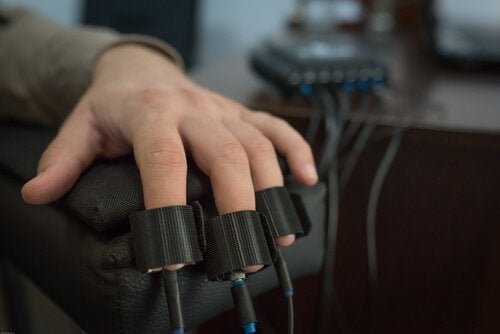The polygraph, commonly known as the “lie detector,” is an instrument created in the 20th century. Is your linguistic etiology derived from poly?And chart – for graphics and writing. Therefore, it can be said that the polygraph is the machine responsible for generating several graphics simultaneously. But what do these charts measure? They simply determine the physiological response presented by the interviewee.
This instrument was born with the idea that emotions are reflected in physiological responses, that is, if I am afraid, it will cause me sweating, increased heart rate, agitated breathing, for example, and most importantly, it has been used with people suspected of committing a crime to try to determine whether, through their testimony, they are lying or telling the truth.
- From the 1920s on.
- The idea of creating a machine capable of detecting lies began to develop.
- That’s how we witnessed the birth of the polygraph.
- And William Marston was in charge of shaped the project.
- Who created a lying curve based on different blood pressure measures.
- However.
- The results of its lie detector were not accepted as evidence.
- As they were not approved as a procedure even by the scientific community.
Later, Larson, a psychiatrist and Berkeley policeman, built a modified version of his predecessor’s lie detector, thus wanting to modernize security forces and avoid the brutality with which statements were obtained, and along with blood pressure introduced another measure: respiratory rate. With this, it was intended to increase the accuracy of the results. Thus, in 1924, the polygraph began to be used in police investigations.
However, to reach the current polygraph, this intermediate polygraph had to undergo a new touch-up, added by Keeler, so the new measurable variable added to the previous ones was electrothermal conductivity, that is, the characteristic that our skin is able to conduct electricity. It was understood that doubt and, by extension, lying, increased the conductivity of our skin, reaction related to fear or anxiety.
In polygraph two tests are more widely used, their procedures are different, but both rely on asking questions in order to create certain emotional changes in the suspicious potential, so that they are physiologically externalized.
That is, the test of the control topic, is the most used. It is characterized by three different types of questions asked: irrelevant, relevant and control questions.
These are questions that do not offer any important information, are general and are not related to the case being investigated, the person is not expected to show a type of activation when answering.
They relate to research. These are specific questions about the event that occurred, the answers must be negative (giving an affirmative answer would require admitting the facts) and that the culprits experience greater activation (both emotional and physiological).
Extremely ambiguous problems. They are very vague and are designed to be formulated in such a way that it is impossible to respond negatively without hesitation of the answer itself. They refer, for the most part, to far-flung facts.
They have nothing to do with the case, but may refer to facts made by the person some time ago that may have any resemblance to what happened, for example, if the crime was murder, the interviewee is asked if he has ever done so. wounded someone in his life, so the culprit and the innocent are expected to have the same activation.
In this way, the objective is to make the innocent more active in the face of control problems, when they are more ambiguous, they are afraid to get their answer wrong, in the relevant answers they respond with less activation because they have nothing to do. However, the culprits show greater activation in the relevant issues, because in the end, the consequences of such problems are greater than those of control.
Proof of guilty knowledge. It refers to the culprit’s knowledge of the case. Several questions are asked with several answer options, so only one of them is correct.
It is understood that the culprit knows what the right choice is, as he gets more excited when the answer is presented; however, the innocent, who does not know the case, has the same level of activation in each of the possibilities when he does not know what is right because he has no knowledge of the subject. In this way, the correct answer is totally recognizable to the culprit, but they are also likely to be the other options for the innocent.
Despite the use of polygraph for years, we cannot ignore the fact that there are certain limits that reduce its reliability, the National Research Council published a report on the polygraph in 2003, for example, it analyzed the psychological bases on which it is based or which procedures follow Its most important conclusions were:
Although we have highlighted some limitations, the report indicates much more, we can infer from this that the polygraph is actually far from totally reliable, which is very worrying when you think of the area in which it is applied.
The truth is that there are several gaps that have not been corrected, which should sound our alarms, since using a method that does not guarantee accurate results on the lie can greatly increase the likelihood of condemning truly innocent people.

